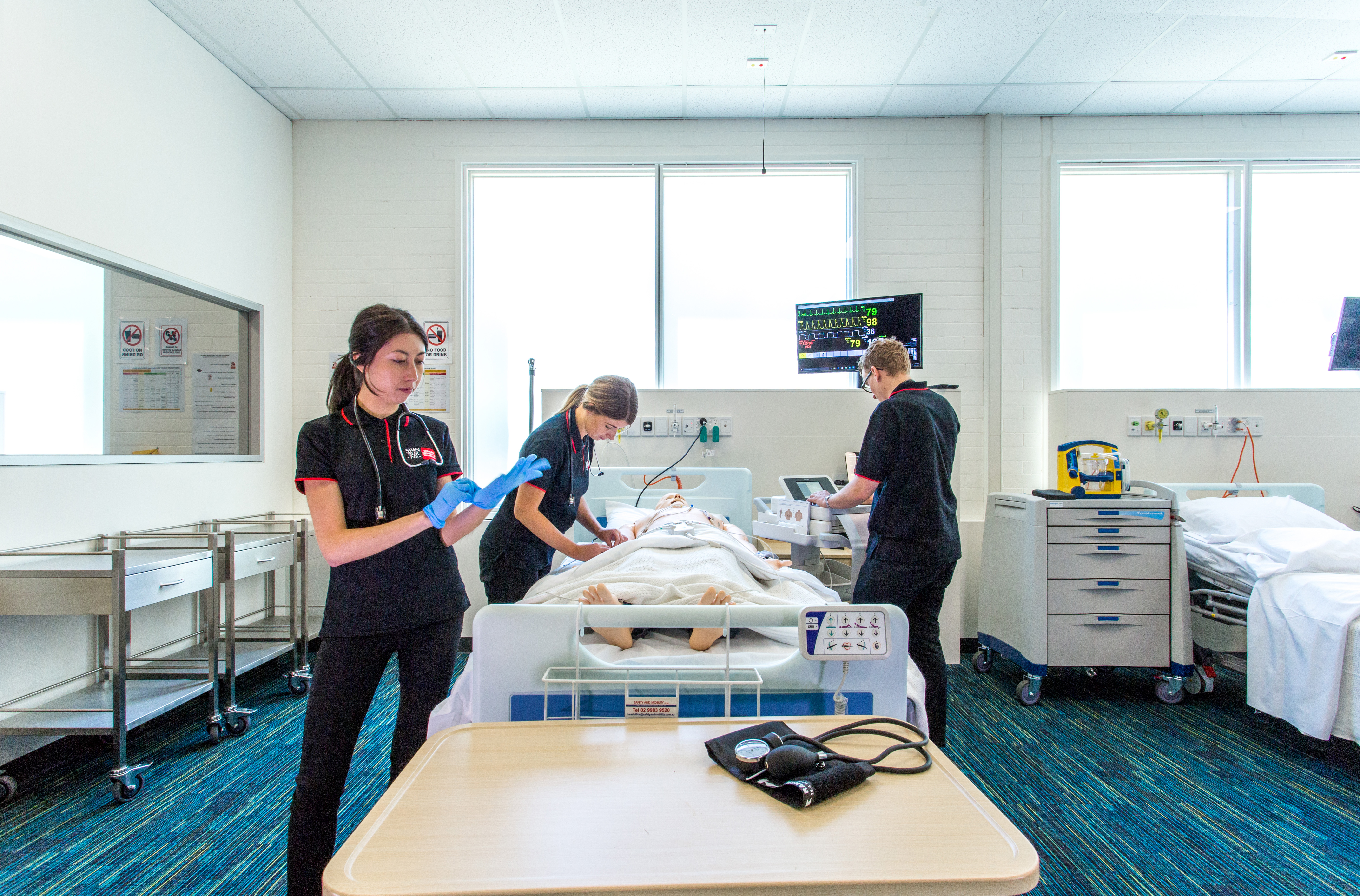Interactive dummies deliver the smarts for next-gen nurses

What does the future hold for nursing, and what makes a next-gen nurse?
Course Director of Nursing, Professor Karen-leigh Edward says that in the future, nurses will need enhanced digital health technology and leadership skills – and we’ll need nurses in much higher numbers.
“We will see an increase in the digital interface between nurse and patient. Especially for looking after people in regional and remote areas,” says Professor Edward.
An urgent need for digital health technology and leadership
“In some regional towns in Australia, there are no GPs and few nurses,” says Professor Edward.
“Swinburne is taking proactive steps to solve this problem by increasing our nursing intake in 2023 and adding digital health technology and leadership as a mandatory unit in our Bachelor of Nursing.”
The need for telehealth will be ever-present, but it won’t replace the need for highly qualified nurses in regional areas. Swinburne’s Bachelor of Nursing is increasing its nursing intake in 2023 and arming graduates with digital health technology and leadership skills.
Simulating real-world scenarios: the highs and lows
Low-, medium- and high-fidelity simulations are commonplace in the Swinburne Bachelor of Nursing’s clinical learning environments (CLEs).
“It’s about creating an environment that’s as close to the real thing as possible. And that has profoundly positive effects for the students’ learning,” says Professor Edward.
The degree of simulation is measured based on how much like the real world it is.
For low- to medium- fidelity situations, highly interactive dummies, not too dissimilar to robots, are used. And they can produce the Uncanny Valley effect.
Highly interactive dummies at Swinburne’s Hawthorn campus are the first stage in arming a student with essential nursing knowledge – in a practical and lifelike setting.
“You can hear their breath and see the rise of their chest,” says Swinburne Bachelor of Nursing final-year student Simone Klimos. “You can take their pulse, take blood, empty a catheter, put a gastric tube in – pretty much anything you can do to a real-life person,” she says.
“Sometimes it can be a bit creepy when you’re assessing them on your own and can hear them breathing next to you.”
For the high-fidelity simulations, professional actors step in play the role of patient. Students use the latest industry devices to assess and evaluate the patient, and intervene if necessary.
Professor Edward says it’s these more lifelike simulations with real human interactions that help build the students’ soft skills and confidence. Students agree.
Deliberately unpredictable – just like the real thing
“The simulations are priceless,” says Simone. “They give you an idea of how machinery works, how rooms are set up and how technology is integrated into hospitals – you gain experience of the way things work in a hospital setting before you go into one for your placement.”
Simone has found Swinburne’s use of technology in the course as well as the simulations with minimal intervention from the reaching staff incredibly useful.
As a nurse, you need to be prepared for anything. Swinburne Bachelor of Nursing student Simone says that her courses simulations and placements have prepared her for the unpredictable nature of nursing. Photo by Patricia Prudente on Unsplash
“In the simulations, patient deterioration automatically happens, and it happens rapidly. Those things help – you can’t predict them in real life, so having them in an educational setting built my skills and my confidence too,” says Simone.
Job interview: guaranteed
The on-campus clinics and simulations help to set students up for even greater success and deeper learning when they complete their 800 hours of professional experience placements each year for the three-year duration of their course.
Professional placements occur in a range of private and public settings throughout Victorian regions and Melbourne.
Professor Edward is relentless in her pursuit of finding new industry partners for Swinburne students to complete their placements, so that they can develop the most well-rounded and skilled nurses.
Simone is reaping the benefits of this commitment and has already secured a guaranteed job interview with Eastern Health by becoming a fellowship student and a RUSON (Registered Undergraduate Student of Nursing).
“As part of the Eastern Health Fellowship, I’ve gained experience working in immunisation clinics, and working under a Registered Nurse in the emergency and the neurological ward at Box Hill Hospital. I also did a six-month placement in the orthopaedic surgical ward,” she says.
“I’ve seen everything from bike, car and electrical scooter accidents, and have worked at different points of the process – from people coming in and not knowing what is wrong with them, to patients who have a very detailed care plan to deliver.”
Study that suits your lifestyle – not the other way around
Swinburne’s flexible approach to study, its use of innovative teaching and placement opportunities were major drawcards for Simone choosing to study there.
“I originally studied public relations at Swinburne in the early 2000s. I had a great experience then. I knew Swinburne had great support systems in place, offered flexible study, and I knew the course had extensive placement opportunities, and cutting-edge tech and equipment.”
When she graduates, Simone is interested in working in all aspects of nursing in a perioperative setting – or within the plastics settings looking at scar review and burns.
“That’s the best thing about nursing. There are so many different areas I could go into,” she says.
For now, she’s focusing on completing her final year of studies and getting the most out of all of her remaining placement opportunities.


